Inside Artist Tamara de Lempicka’s Tumultuous World — Examining the Life of a Rediscovered Legend
Madonna and Jack Nicholson Collect Her — and a Houston Stint Reveals Plenty
BY Catherine D. Anspon //Tamara de Lempicka, circa 1934. Image courtesy and © the Tamara de Lempicka Estate, LLC.
The grande dame of Art Deco, Tamara de Lempicka, has been rediscovered — again. We are reconsidering the legacy of the artist, who called Paris, Italy, Hollywood, New York, Houston and Mexico home, and which reads like a sweeping novel of the 20th century. A gilded life, scandals, bravery, jewels, escape from the Bolsheviks and the Nazis, escapades with both sexes, a titled marriage.
Now, PaperCity bring you an exclusive interview with the keepers of the flame — the artist’s granddaughter Victoria de Lempicka of Houston, and great-granddaughter, Marisa de Lempicka of Aspen — for tales of Tamara, including her years in Houston.
Although collected by Jack Nicholson, Barbra Streisand, and Madonna, Tamara de Lempicka’s renown has largely been limited to insiders and devotees of the Deco era, a side note in art history to the global art market. But all that changed in the flurry of one auction night in London last February, when a canvas that offered a glamorous ode to a Parisian cabaret chanteuse, Portrait de Marjorie Ferry (1932), sold for $21.1 million.
The sale propelled de Lempicka into the stratosphere and made her work No. 8 among the Top 10 Impressionist and modern lots sold in 2020. Her subject, the smoldering English beauty Marjorie Ferry, is portrayed in a silver-and-gray cubistic interior bisected by phallic columns, wearing a shimmery satin evening gown that spills off her shoulders.
The image became emblematic for 2020’s heady art marketplace and was used as the lead for Artnet’s Best-Seller Lists. The only woman on the list, she came in ahead of Pissarro and Giacometti and a few million below a pair of Magrittes. Nonetheless, mention Tamara de Lempicka, and nine out of 10 people will draw a blank.
But provide a visual clue — “The woman in the green Bugatti” — and most will immediately recognize a painting that’s iconic on the level of portraits of Frida Kahlo, Andy Warhol’s Campbell’s Soup cans, and Georgia O’Keeffe’s flowers.
The Houston chapter of Tamara de Lempicka, an unconventional beauty with outsized talent matched to her time — the brash Machine Age — is one that prefigures Instagram and outdoes Hollywood. She was an artfully choreographed, crowd-stopping presence in a cloud of perfume, with crimson lips and nails, attired in Madame Grès and Schiaparelli. This article came about because of a chance encounter at Anya Tish Gallery a year ago.
There I met Victoria de Lempicka, an elegant woman who was surprisingly down-to-earth despite her famous grandmother, Tamara. Victoria was friends with Tish due to their twin connections of Polish lineage and love for art. The gallerist introduced us.
An Art Force’s Early Years
Tamara Rosalia Gurwik-Gorska — born in Warsaw, the middle child of three at the dawn of the 20th century — began an artist’s life during a pampered childhood when she rejected a portrait of herself her mother had commissioned and demonstrated how it should be done by drawing a likeness of her younger sister. A grand tour as a young teen followed, with stops in glittering Monte Carlo, then on to Italy to bask in museums in Venice, Rome, and Florence.
The journey to painter continued years later in Paris, where she was a refugee who had lost her fabled life in St. Petersburg, her husband ripped from her arms by the Bolsheviks. She sacrificed her honor with a high-level official to get her unambitious husband, Tadeusz de Lempicki, released from political prison, and cast about for a way to support them both, and their new baby.
Her art career was born when her sister Adrienne (later to become an accomplished architect) reminded de Lempicka of her drawing abilities a decade earlier. She left Paris in 1939 with her second husband, the immensely wealthy Baron Raoul Kuffner, who began as her collector. The couple sailed for New York, then lived in Hollywood, back to New York, and after the Baron’s death, Houston.
Fast forward to 1952, when de Lempicka first visited Houston, where her only child, the late Baroness Kizette de Lempicka-Foxhall, lived with her husband, Harold Foxhall, known as Foxy. The tumultuous, dysfunctional mother-daughter relationship played out here.
Tamara moved permanently to Houston in 1963, after the Baron passed away in 1961. Granddaughter Victoria de Lempicka and great-granddaughter Marisa de Lempicka pick up the story from here.
Together, this mother-daughter duo is forging ahead on the family-led foundation to carry on Tamara’s memory and art-world legacy, while seeking to fund creative endeavors for other women who, like the artist, have struck out on their own.
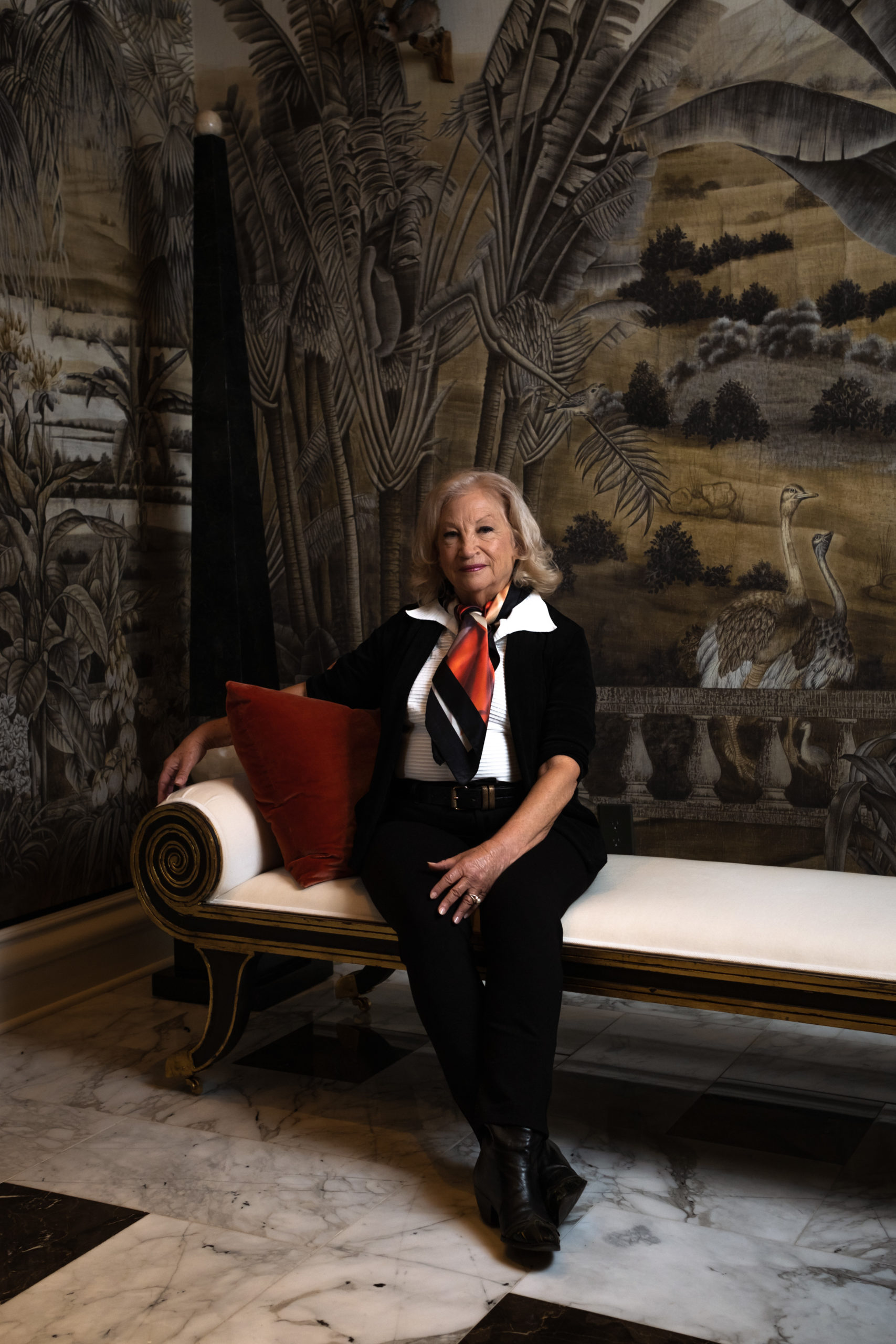
Deciphering de Lempicka
On a Deco talent in Texas.
Victoria de Lempicka: My father, Foxy, was transferred by Dow Chemical from Washington DC to Houston. He was a geologist who had studied at Stanford in California. He met my mother Kizette at Stanford, where Tamara had a home in the Hollywood Hills. Tamara was very instrumental in my parents buying a home in River Oaks, because she said, “Location, location, location.”
She was also generous and helped my parents out in terms of a down payment. The address was 3235 Reba Drive, between Kirby and River Oaks Boulevard. The house, which Tamara had painted pink, is no longer there — unfortunately it was destroyed in 2001.
On Tamara as decorator.
Victoria: Tamara and my mother did the design for the Reba house together. My friends were quite astounded because it was so different from the decoration of their homes. Tamara was really avant-garde in her vision and her aesthetic.
The house wasn’t very big but it never looked crowded; it was always white. It was furnished with a lot of antiques from the Hungarian estate of Tamara’s second husband, Baron Raoul Kuffner.
They were heavy and ornate, but when she painted them white, suddenly everything matched everything else, and it looked stunning. The furnishings came from Baron Kuffner’s castle, once part of the Austro-Hungarian empire, called Diosek. It still exists, and we’d love to go poking around and find out more about it.
I remember shopping for fabric and trim to decorate the house at Hire’s in Highland Village. She had a seamstress make up slipcovers, and all the curtains and lamps were trimmed in “bombelki,” a European-style trim with little balls. That’s proof that “If you have good taste, you can make anything beautiful!” One of her mottoes.
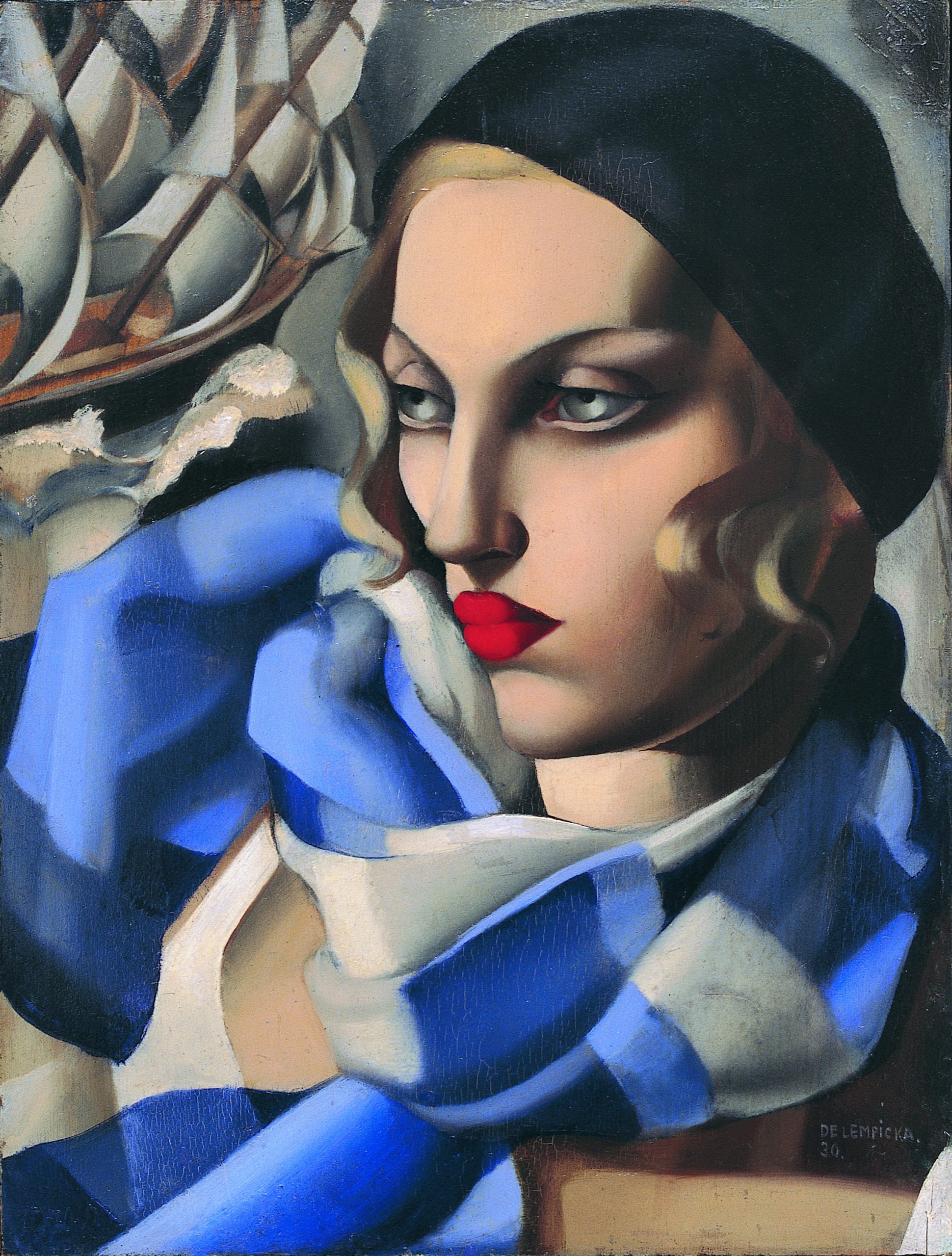
On life in Houston.
Victoria: Tamara moved to Houston in 1963 and lived in the Warwick Hotel for a year where she had a suite. She wanted to put her foot in the door to see what Houston would be like for her; that’s why she didn’t buy right away. After the Warwick, she bought an apartment at the Regency House.
She never stopped painting. She cultivated friendships, but she was always thinking about how the press would see her and how she would be received.
She was close with [Houston Chronicle editors] Betty Ewing and Ann Holmes. I have a few clips from the newspaper. She loved the symphony and the theater. She loved buffet luncheons, at both the Warwick Hotel and the Racquet Club.
Most of her jewelry was European or from New York. She liked to design it herself. We have some in our collection which we have lent to museum exhibits and some was sold at Christie’s Magnificent Jewels. She designed most of her evening clothes, long tunics with matching berets, cutting one paper pattern that fit perfectly, then reproducing it in a variety of drapey jersey fabrics sewn by her seamstress.
On pals in Houston.
Victoria: Tamara was friends with Jane Blaffer Owen, more than anyone else. She had a wonderful relationship with Jane, who invited us to her club, Houston Country Club — and sometimes to her home. Tamara gave her artwork to a number of people she was associated with — sometimes to friends, sometimes an attorney, a doctor, different people.
She was a generous friend, and she gave Jane Owen one of her favorite ball gowns designed by Madame Grès.
She was also quite good friends with Kitzia Poniatowska, Mrs. Conrad Moore, descendant of the last king of Poland, Stanislaw Poniatowski. It was in Houston that she was treated by the then-young Polish doctor Stanislaw Burzynski of the controversial cancer treatments — a hero in my book. He treated her cancer. She had a bit on her tongue from smoking, and it was excised without metastasis.
She and my parents knew the di Portanovas, as well as Natasha Rawson, one of the founders of the Houston Ballet, and the founder of the Alley Theatre, Nina Vance. Tamara was known at the River Oaks Bank and around town as Baroness Kuffner — most never knew her artist name.
Tamara anecdotes.
Victoria: The first time I ever saw Tamara in Houston was in 1952. We were already living in the home on Reba Drive, and I heard, “Oh, your grandmother is going to be coming in from Paris, and she’ll be arriving at four in the afternoon.” So, a lot of excitement. The house was cleaned, even more than usual. She arrived in a yellow taxi. The door opens, and this perfume wafts out, and I smell the most divine fragrance I’ve ever smelled in my life.
She’s dressed in a hat with pearls and gloves. She looks at me with those big blue eyes, just piercing. I almost fell over. It was really an impact, that first meeting. I was maybe six years old. That has stayed with me my entire life. How she would walk, dress herself, how she would act. She walked like a dancer — that erect spine, shoulders back.
On Kizette and Tamara’s relationship.
Victoria: You could call it love/hate, but Kizette never hated Tamara. It was all love. But Tamara was more love/hate. Kizette looked a little bit like her father, and Tamara felt very abandoned by her first husband, Tadeusz de Lempicki. Although Tamara was behaving pretty naughtily, she never expected him to leave. But he did, and she was bitter about that. That’s the only explanation I can give.
Tamara and Kizette had their arguments, then 10 minutes later, they would be, “Oh, let’s go and get some ice cream.” Or, “Let’s order lasagna or go out to lunch.” Hug and kiss, and it’s all over. It was a strange situation.

Marisa de Lempicka: What I can say about Tamara is that she was very demanding — on herself and on the people around her. She was a perfectionist in every sense of the word. She was demanding with Kizette, too. She liked everything just so. She wasn’t an easy woman, which is true for many talented artists and successful people. Nowadays you would say, “My way or the highway.”
I think it was a little like that with Tamara. But Kizette was a very sweet person, so patient, and adoring and loving. Tamara showed her love for Kizette by making her these amazing paintings that are in some of the most wonderful museums in the world.

On Tamara in Mexico.
Victoria: My parents, Kizette de Lempicka-Foxhall and Harold “Foxy” Foxhall, had rented beautiful homes in Acapulco and Cuernavaca every summer since the late 1950s. When Tamara visited us there, she fell in love with the climate, the beauty of the homes and gardens, and the lifestyle, with servants who were so sweet and gracious and knowledgeable about running a household.
It was something she had not experienced in Europe or the U.S., and was more in line with the lifestyle of her childhood in Poland and Russia.
Soon after, Tamara acquired a beautiful villa, Tres Bambus, on a private street where the Shah of Iran’s mother and sister also had a villa. She developed close friendships with Europeans and Americans and prominent Mexicans like Octavio and Maria Paz, and the ex-queen of Italy, Maria José di Savoia, who was about her age. She spoke five or more languages fluently.
She was fluent in Italian but was learning Spanish, so if she didn’t know a word in Spanish, she’d fill in with the Italian word.
Marisa: I was born in Houston, but when I was one, we moved to Buenos Aires. Tamara invited us to visit her at her villa, Tres Bambus in Cuernavaca, for the summer, where she had a chauffeur, cook, cleaning woman, assistant cleaning woman, gardener, and a woman who would come once a week to do laundry. And they all lived in the servant’s quarters in the house.
It was designed by Alfredo Terrazas de la Peña, also architect for Barbara Hutton’s Japanese-inspired estate, Sumiya, in the same town. Artist Victor Manuel Contreras was her good friend in the last five years of her life.
When it was too much for her to manage the house, she asked him to basically buy the mortgage. He did, and he would help her take care of the servants, and he took care of the property. It was a good arrangement for both of them. After Tamara passed away he sold it; now it belongs to a baron. The whole thing was just so magical.
The human side of the grande dame.
Marisa: I love to tell this story, because it shows a softer side. When my sister and I met Tamara, she was already 76 years old, and we were 5 and 4. She paid for our trip, from Argentina to Mexico. The most beautiful lunches, amazing breakfasts … She’d heat the pool for us so we could swim at night. She made the most amazing little dresses for us by hand. She went to the fabric store, bought the material, choose the pattern, cut it by hand. She spent three weeks making these dresses for us.
I was invited to spend the night with her in her room in Cuernavaca. In those days, her favorite color was lilac. The whole room — I’ve never seen anything like that — from the bed covers to the walls to the furniture, it was all this lilac color. Lilac and white.
When she bought the house, it was all black lacquer. For her, natural light was always important. She would paint by the window. She painted her whole life; till the day she died. She had two queen-sized beds. I’m already in bed, tucked in, and she decides to do a little touch-up on the painting she’s working on. It was of Saint Anthony.
She puts on her smock. I’d never smelled the scent of oil paints. She said, “You know, Marisa, when I was in Paris, we lost everything. I decided to start painting to support myself, to support your grandmother, to support Kizette, because we had lost all our jewels.
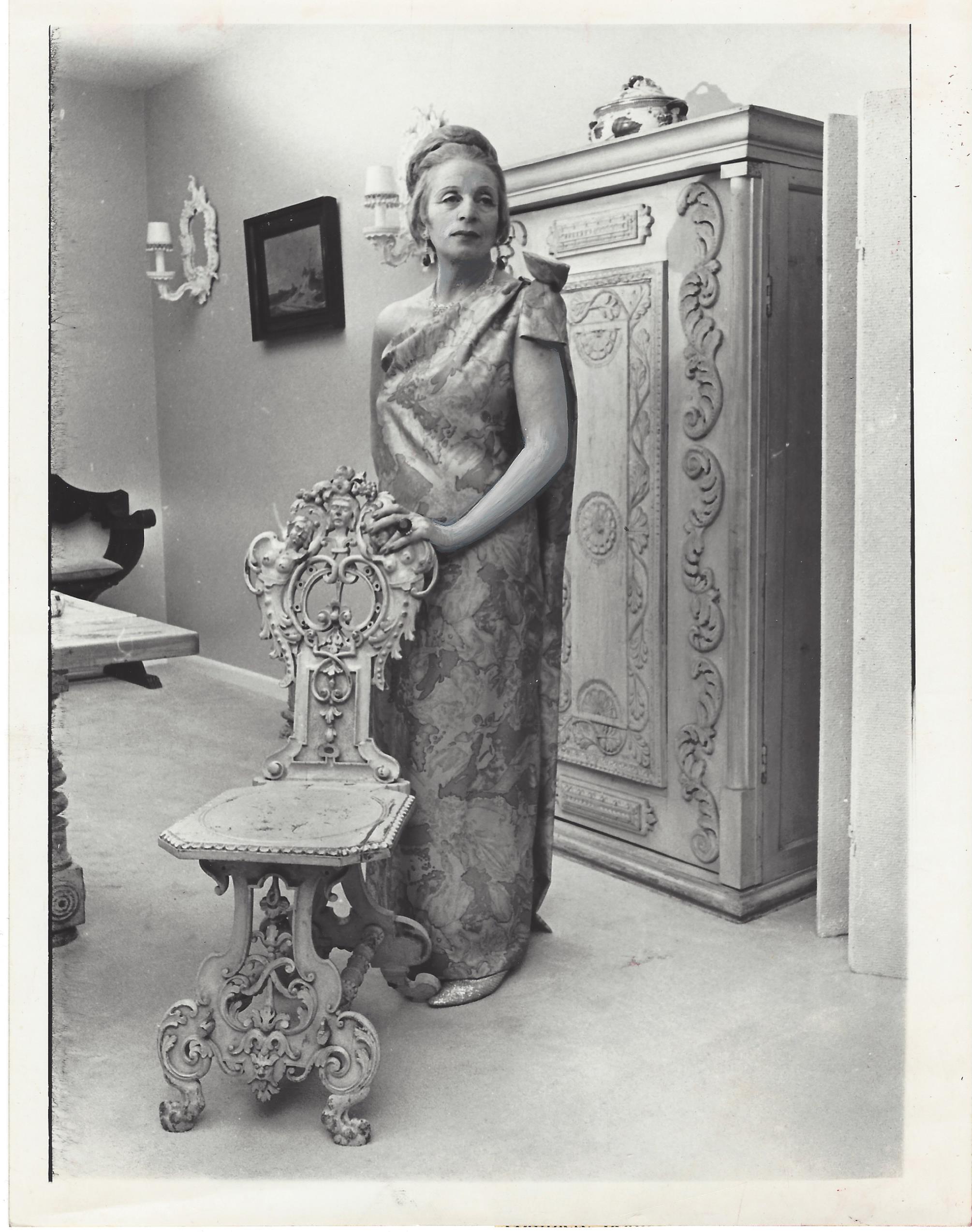
I began selling my paintings, and they became very sought after and I became a very successful painter. After every painting I sold, I would buy myself a diamond bracelet. And I would not stop painting until I had bracelets from here to here” — gesturing from wrist to elbow. She wanted to instill in me that you needed to work hard to get what you wanted. The bracelets weren’t there to show off; they were a sign of security.
Growing up in Argentina, a lot of women did not work. Think, in the 1920s, women were just earning the right to vote. She’s an amazing artist, obviously gorgeous, and she devised all of it herself; she managed her own career. She had no one to rely on.
On Tamara and her times.
Marisa: Can you imagine her lifetime? She lived during the first World War, when her little brother was killed. Then the Bolshevik Revolution, then the Spanish Civil War. Mom says she was very touched by that because the artists were persecuted during the Spanish Civil War. Then the invasion of the Nazis, then Warsaw was destroyed.
Two million Jews died in that bombing. Warsaw was devastated. They only left the old parts, where the castles are, because the Nazis were staying there. You have everything, you lose everything. How many times … Of course, she had to be guarded, calculating, on the defense.
She was a tough woman, but once you put her in the context of what was going on in the world, you admire her even more. She’s such a survivor.
On Tamara and her collectors.
Marisa: Madonna owns about four or five paintings, many of the important ones, including Andromeda. And Madonna’s videos, “Open Your Heart,” and “Vogue” are based upon her artwork. You’ll see her paintings right away, and “Vogue” is totally Tamara.
There’s a video in the French archives of Tamara having dinner in her lavish apartment with her butler. He was Asian, and in “Vogue,” Madonna has an Asian butler and all the aesthetics are Lempicka.
It started with the Bugatti portrait.
Victoria: It’s very small format. It’s amazing how powerful it is. That is her most iconic work — the one that everybody recognizes, even if they don’t know her name.
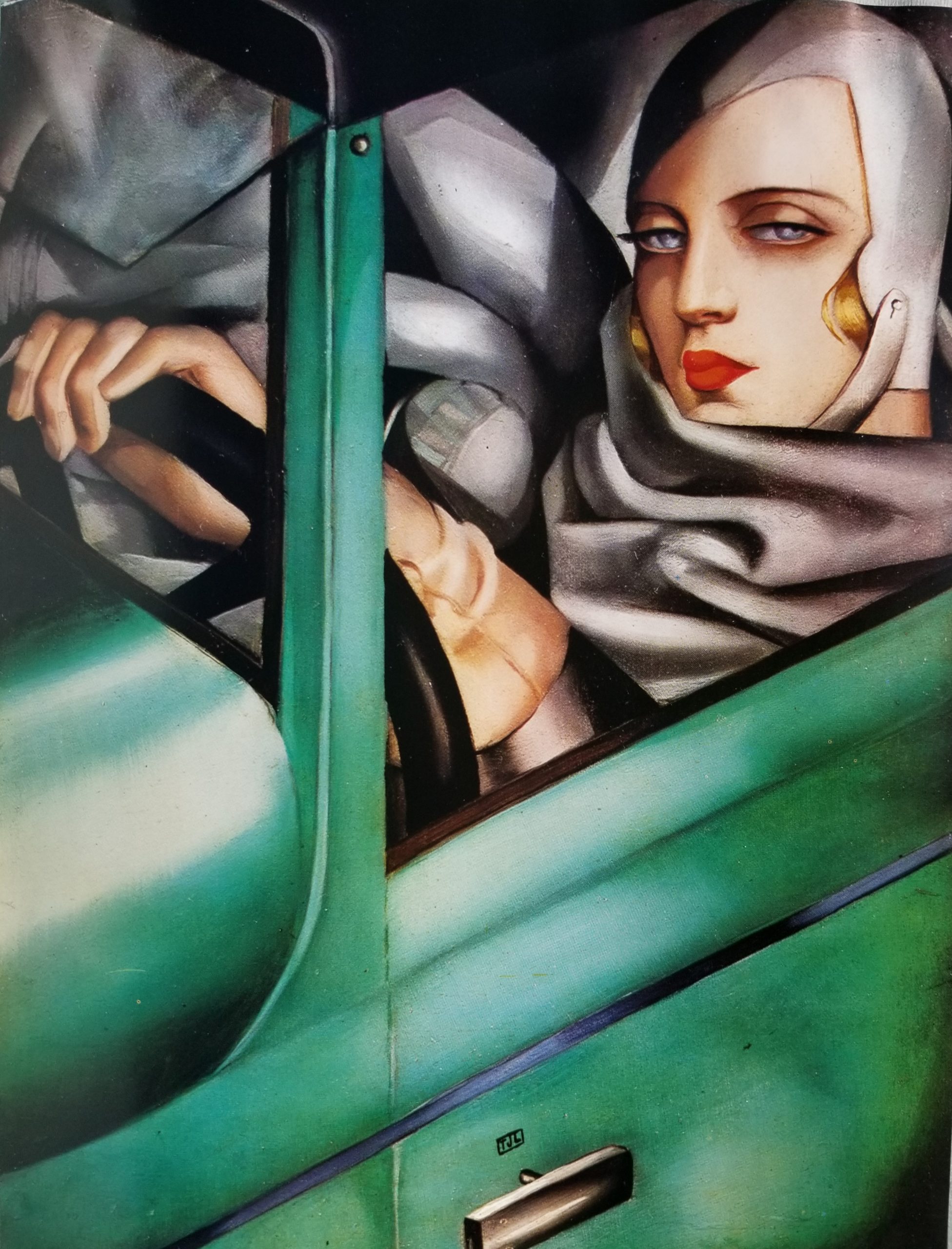
On what remains.
Marisa: In the archives, are sketches of flowers and two people kissing from 1908. She had amazing draftsmanship. And we have some abstracts. We have a pencil drawing from 1972, when she was 74 years old. From Mexico, we have beautiful watercolors of the people and peasants.
She admired their lives. She loved the colors of Mexico, the yellows and the bright pinks and purples and blues. The last few years, she repainted some of her most famous paintings: La Belle Rafaëla, Andromeda, Saint Anthony.
She wanted to relive the most famous time of her life. We have personal items she carried with her through all these moves: St. Petersburg, Paris, Hollywood, Houston. Photographs in a leather book. Tamara’s favorite [photographic] portraits, a swatch of blonde hair — we don’t know whose it is — jewelry, the ring [poet and playboy] Gabriele d’Annunzio gave her that she wore her entire life. Hats, gloves, cool little reading glasses. Her paints, palettes, brushes, personal notes, notes from her friends from school.
Victoria: It’s amazing to me because she never seemed to be sentimental at all. I was astonished to find those things.
Marisa: We are trying to make sure that we leave the archives behind to share with the world. We need help to make sure these papers don’t disintegrate, that the photographs are well archived, that her clothes are well-kept. I have no children, and my sister has no children, so when we’re gone, we want to make sure the archives are in a place where people can study them.
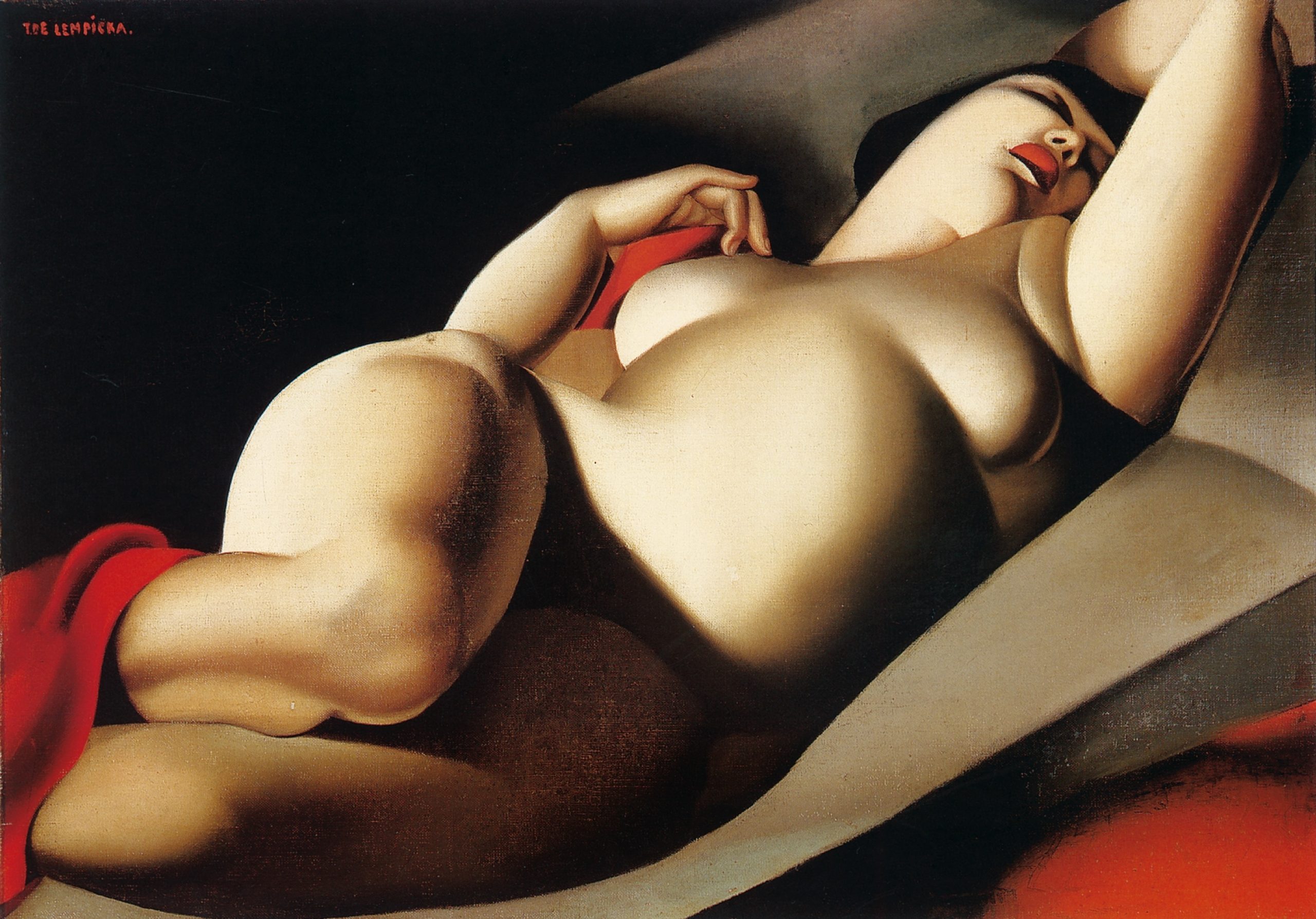
Establishing the Tamara de Lempicka Foundation.
Marisa: I felt I had to make my own path, my own career. I started a business, I worked in hotel management, traveled, and for the last few years, I worked in the entertainment industry. And then mom needed help with the archives because it’s so much work. We have emails from curators who want to do exhibitions, from fans, and people that want to do products. I felt I finally had the experience through my corporate work and negotiating international deals, to help her.
Victoria: We still have the copyrights for her images. The copyright is for 70 years after the death of the artist, so we have 30 more years. There have been 13 major Tamara de Lempicka exhibitions throughout the world, and I’ve been the spokesperson for the media for each of these. People so often ask the same question, as to why Tamara is important. And I say, if she had copied what other famous artists were doing, we wouldn’t be here talking about her today.
No matter what medium of art you work in, you must find your personal voice if you want to ever transcend. She was proud of that. She said, “My goal is to never copy. Create a new style, clear luminous colors and feel the elegance of the models. From a hundred pictures, mine will always stand out.” This is a bit of a message to creative people. There has never been a museum retrospective of Tamara’s works in the United States. It’s a shame.

The classic de Lempicka biography was updated and reprinted in 2020, Passion by Design, first published in 1987 by Abbeville Press, seven years after the artist’s death, and written by her only child, the late Baroness Kizette de Lempicka-Foxhall. The new version has been updated by the artist’s great granddaughter Marisa de Lempicka, with insights from Tamara’s granddaughter Victoria de Lempicka.
The book exercises the tumultuous, dysfunctional mother-daughter relationship, which came to its head in Houston, and reads not so much as a tell-all by a disgruntled daughter, but as a tantalizing narrative that lays out the essential Tamara in unflinching yet surprisingly sympathetic detail.
Also in the works is a documentary submitted to Sundance, a play set to premiere in Manhattan, a slate of European exhibitions, a new collection of fashion merchandise, and most importantly, the establishment of the Tamara de Lempicka Foundation.
Keep track of any new de Lempicka updates here.


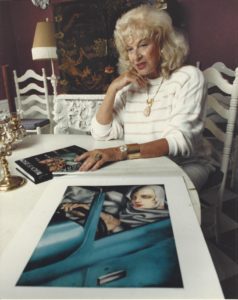




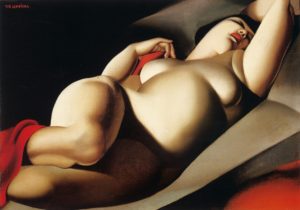

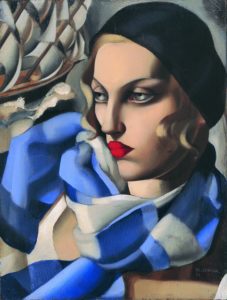

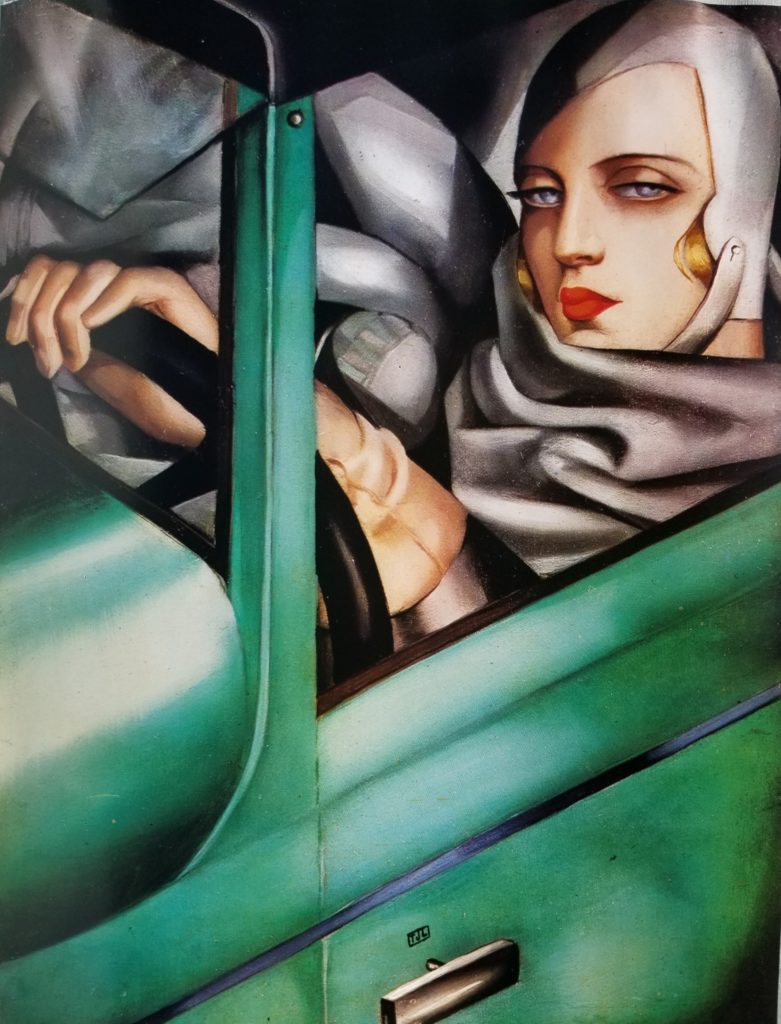
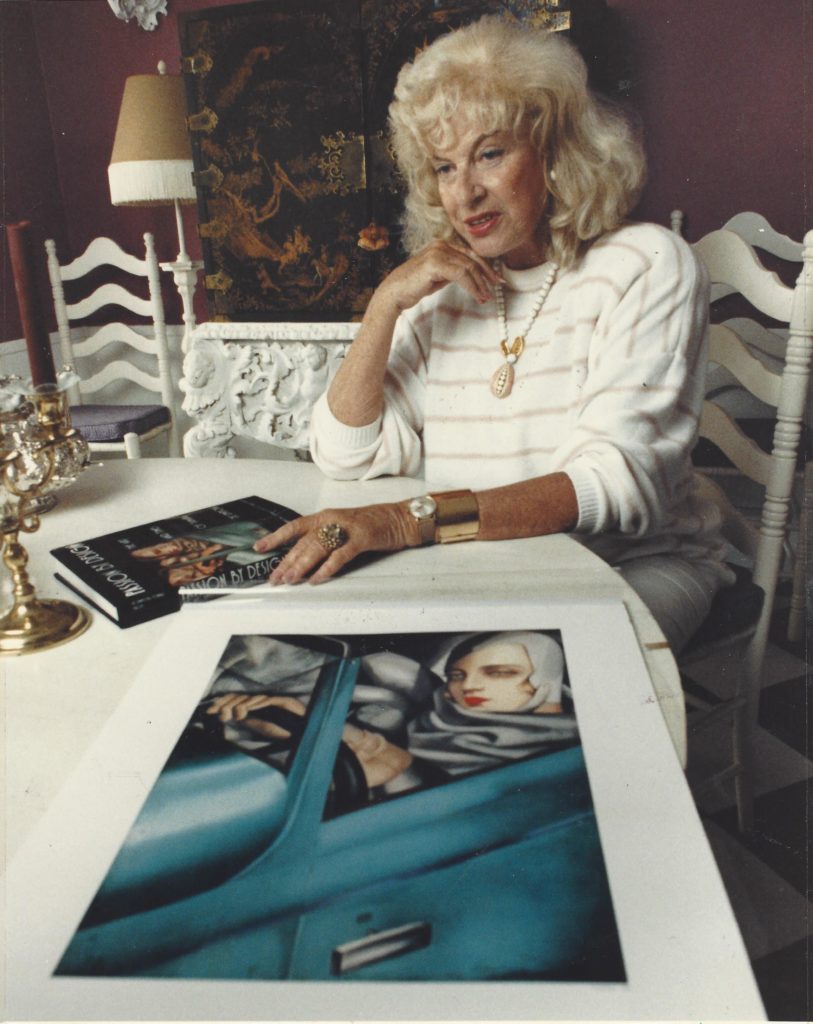
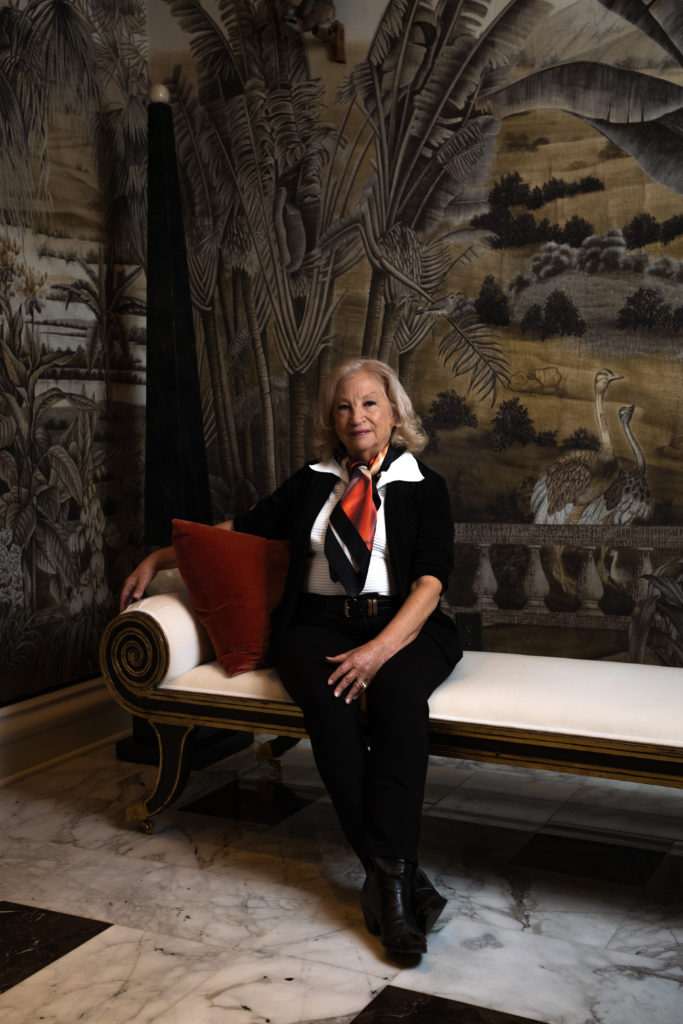
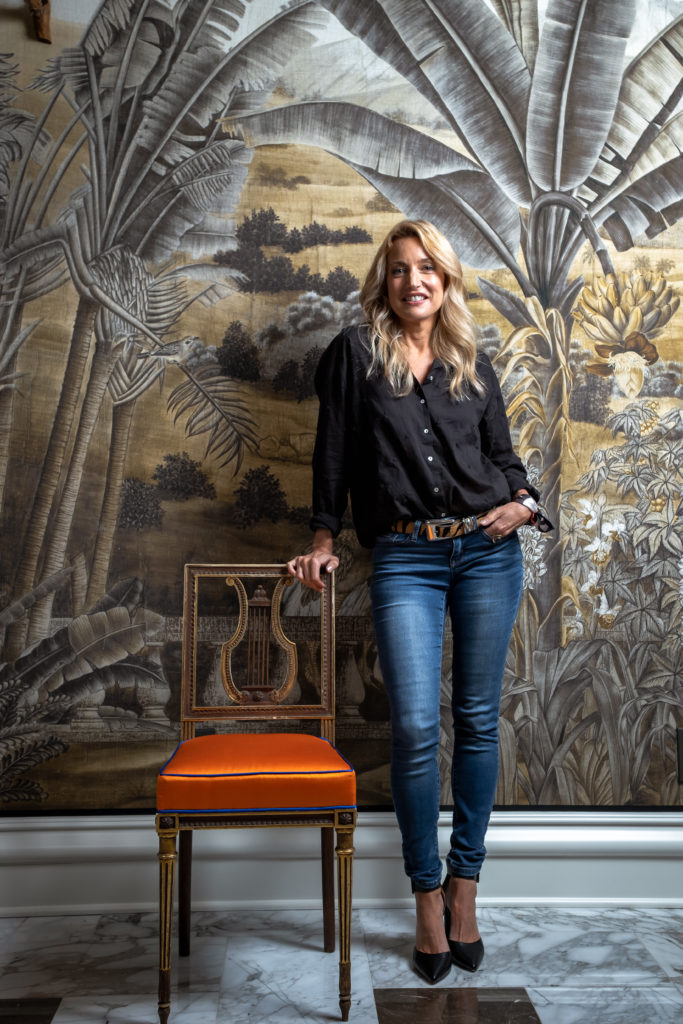

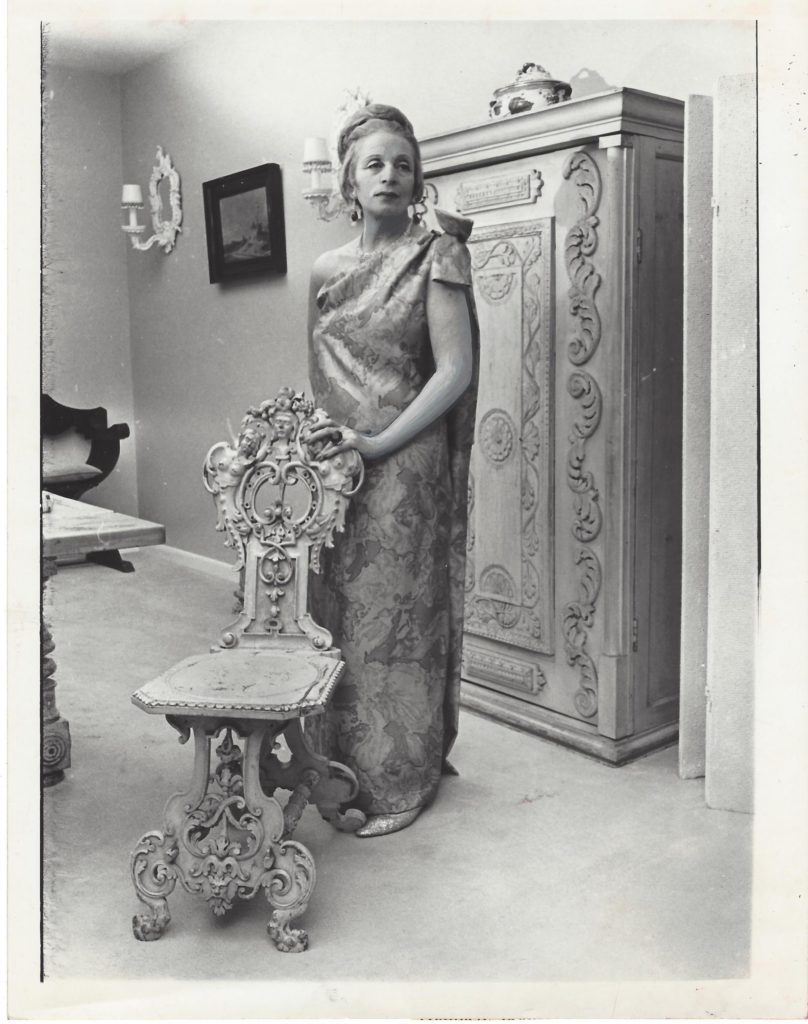


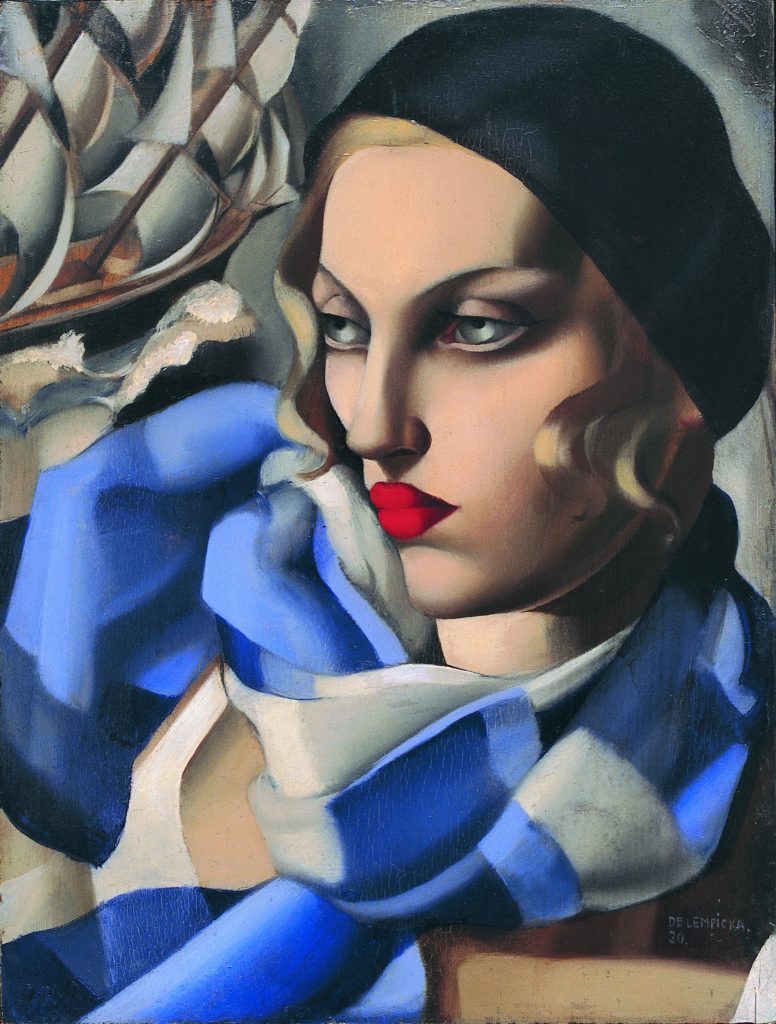












_md.png)










_md.jpeg)







_md.jpeg)

